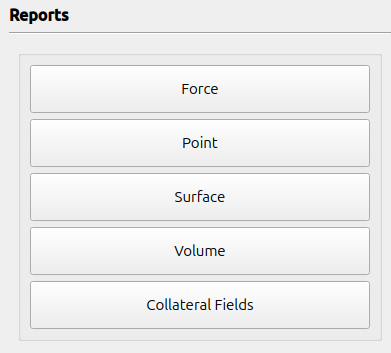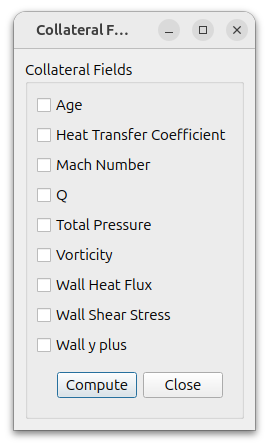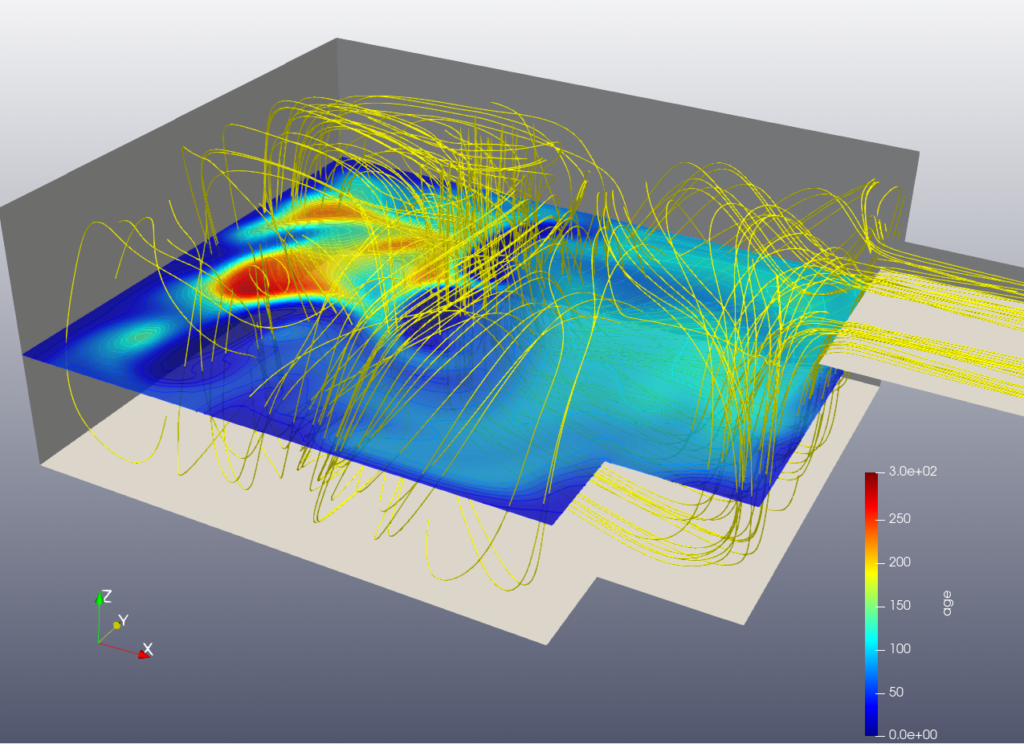Report
This is where the results are extracted after the calculation. Values can be extracted for five categories: Force, Point, Surface, Volume, and Collateral Fields.

Force

For Flow Direction, you can choose between ‘Direct’ and ‘Angle of Attack, Sideslip.’ ‘Direct’ involves inputting the directions of Drag and Lift as vectors. ‘Angle of Attack, Sideslip’ allows you to input angles based on the directions of Drag and Lift when the Angle of Attack (AOA) and Sideslip Angle (AOS) are both zero. The pitch axis is determined perpendicular to the directions of Drag and Lift.
By selecting the ‘Center of Rotation’ and the boundary surface, and then clicking the ‘Compute’ button, you can view the results. Along with the Drag/Lift/Moment coefficients, the Force and Moment can be divided into pressure and viscous components, allowing you to check the values for each direction.
Reference values to calculate $C_d$, $C_l$, $C_m$ are set at [Setup-Reference Values].
Unlike in Monitoring, in Report, calculations are performed using saved data, so there may be slight differences from the values in Monitoring depending on the write precision of the data.
Point
Enter the Field and Coordinate to be reported. If you want to report values on a boundary surface, select the relevant boundary in ‘Snap onto Boundary.’ In this case, even if the coordinates are not exactly on the boundary, it will display the values from the point closest to the specified coordinates.

Surface
Enter the Surfae, Field Variable and Report Type to be reported. For Report Type, you can choose from area-weighted average, mass-weighted average, integral, mass flowrate, volume flowrate, average, minimum, maximum, and Coefficient of Variation (CoV). When selecting mass flowrate or volume flowrate, only the boundary surface needs to be selected, while for the others, both the boundary surface and the field must be selected.

Volume
Enter the Volumes, Field Variable and Report Type to be reported. For Report Type, you can choose from volume average, volume integral, minimum, maximum, Coefficient of variation(CoV).

Collateral Fields
Collateral Fields tutorial : Air age
Various fields can be generated from the calculated results after the calculation is finished or when saving during the calculation.

Here, fields are generated after the calculation is finished, and the selected fields are added to the last saved data.
The following fields can be created
- At boundaries : wall heat flux, wall heat transfer coefficient, wall shear stress, y+
- At whole domain : Q, vorticity, total pressure, age, Mach number
The figure below shows the result of generating and post-processing the age field after a steady simulation.

To create every time you save the result, set it in the [Advanced] pane of the [Numerical Condition] section.